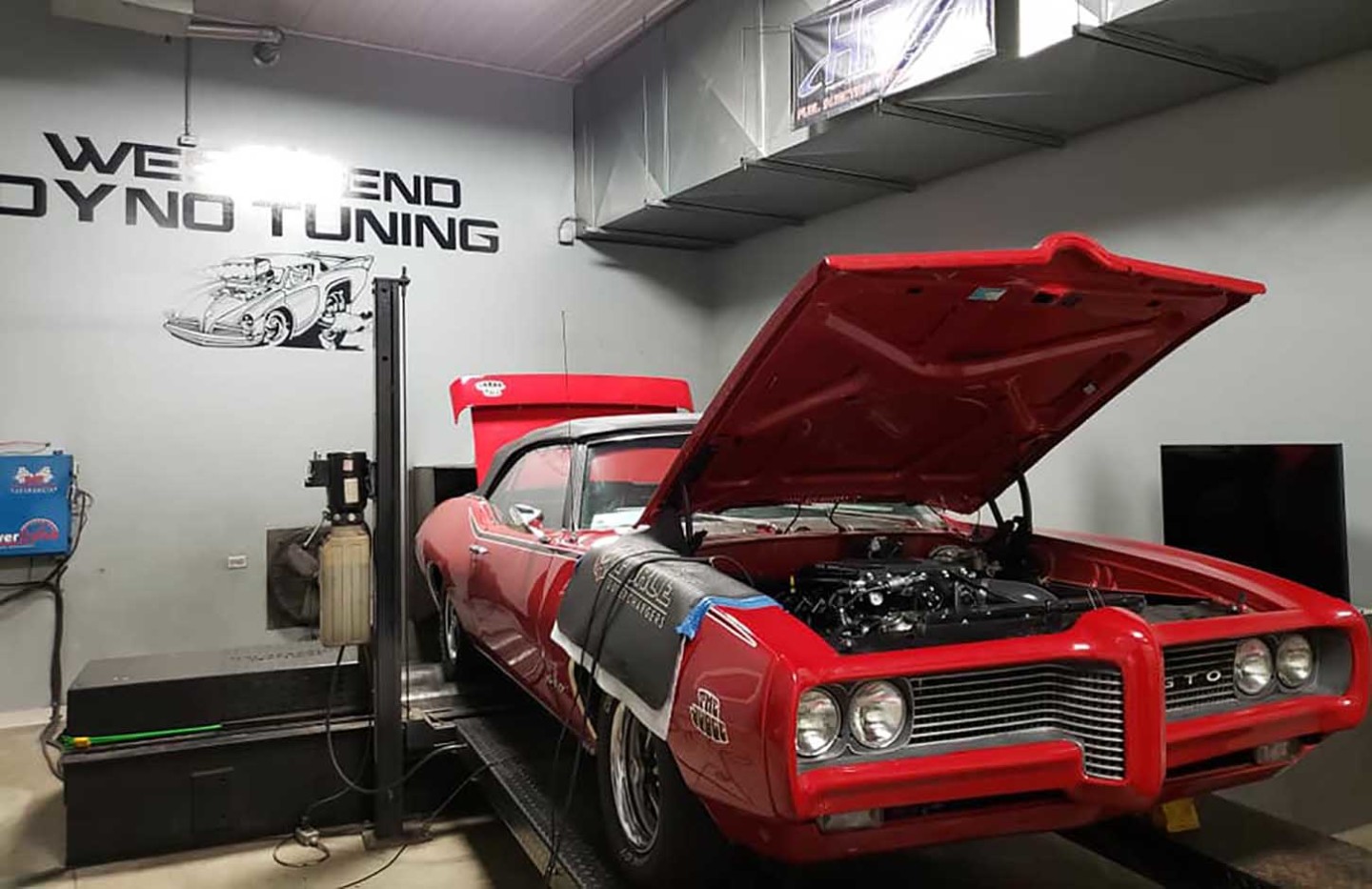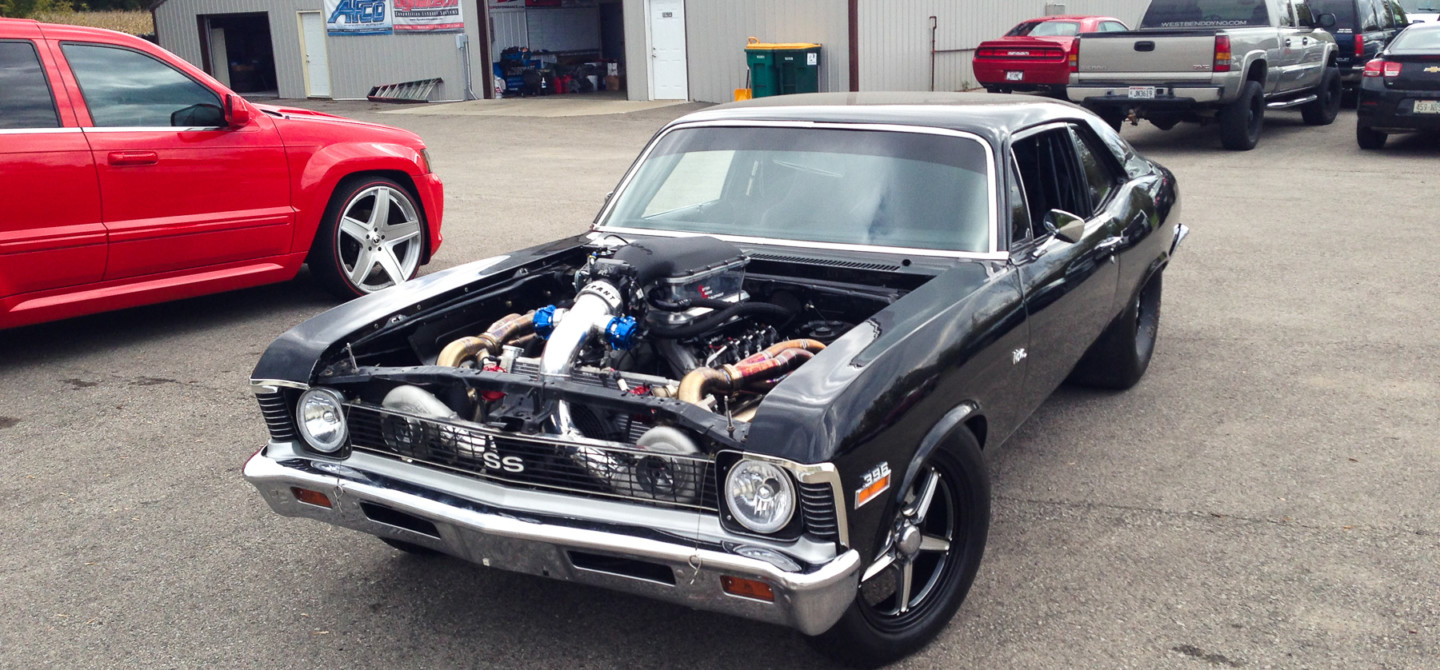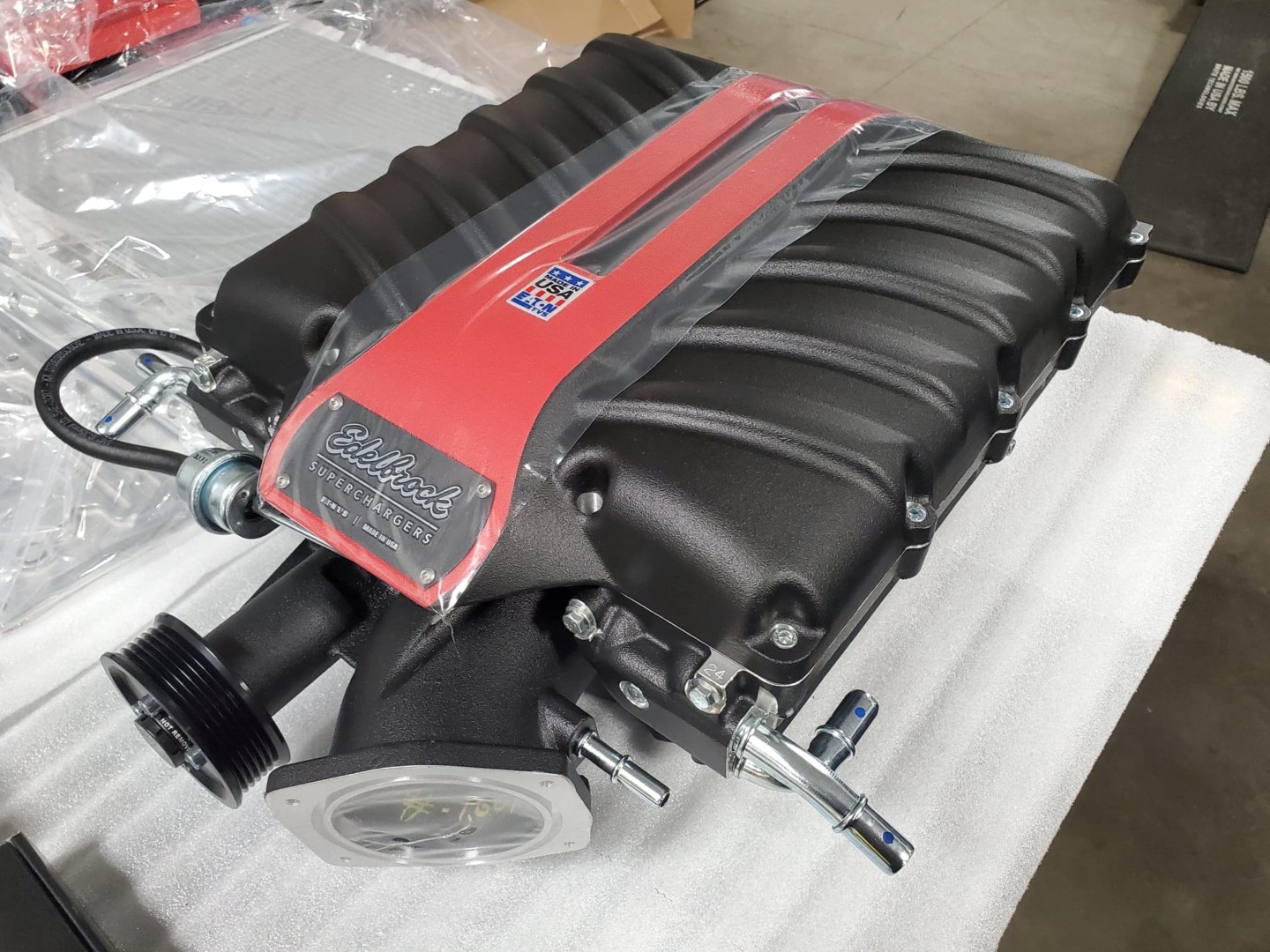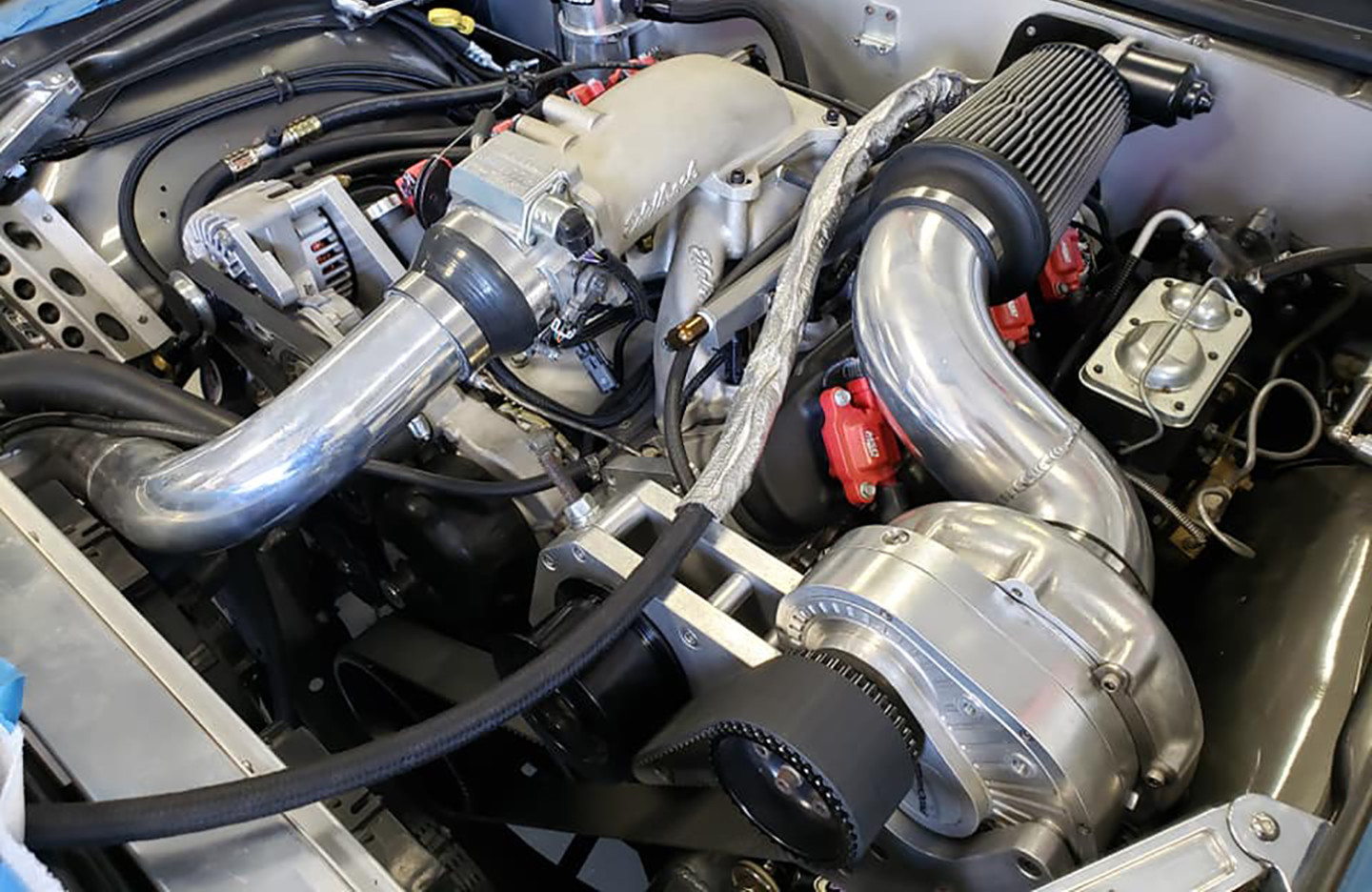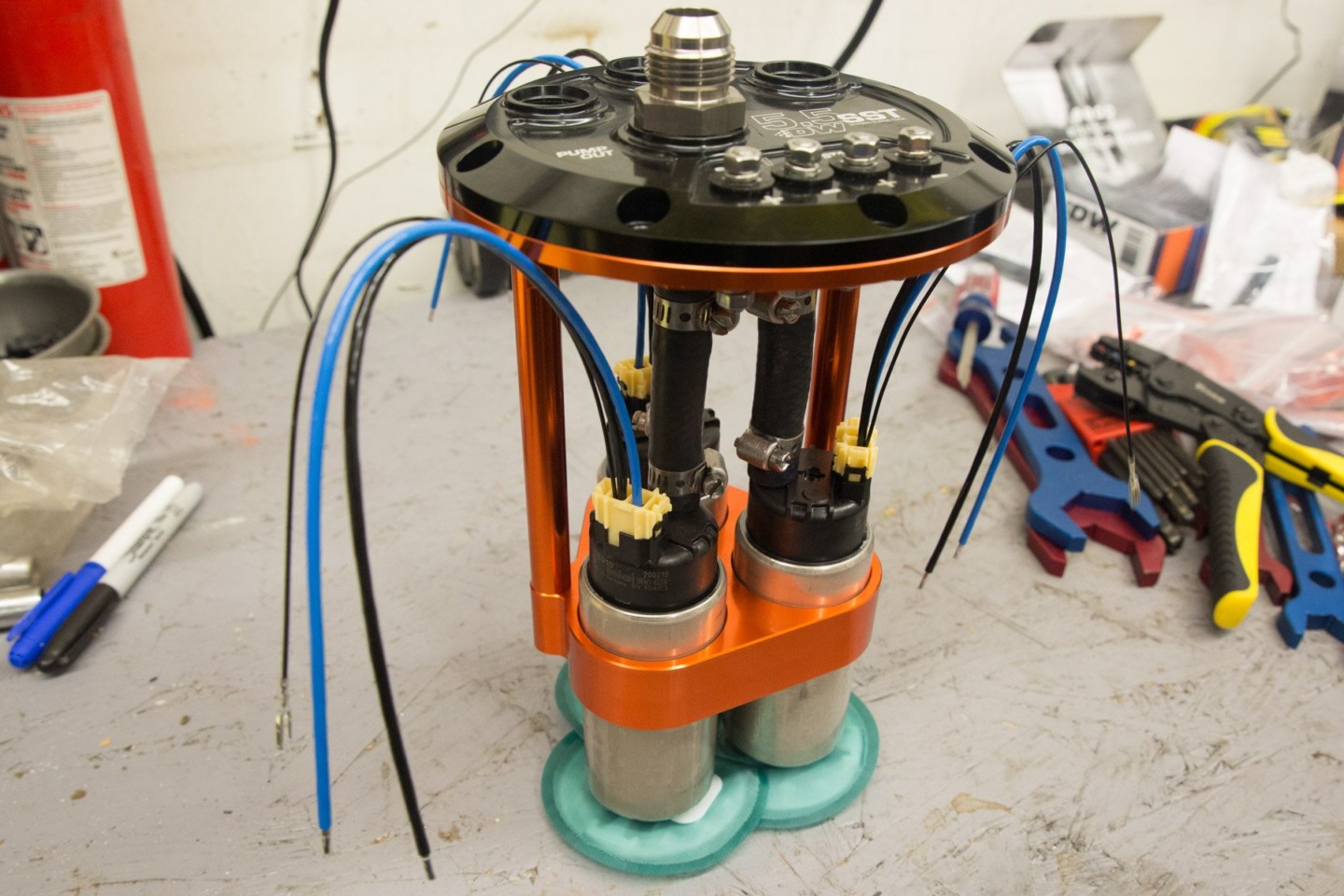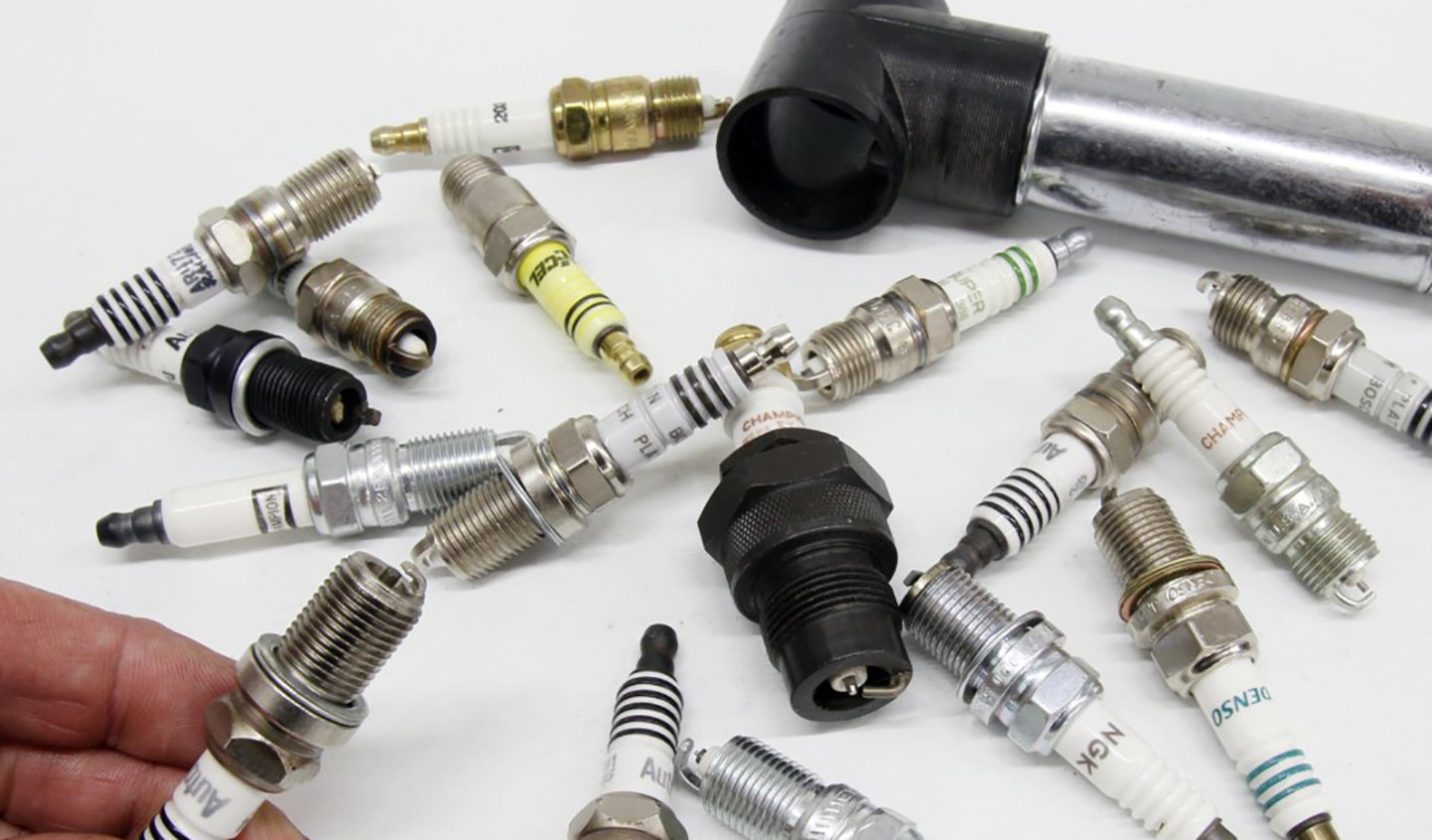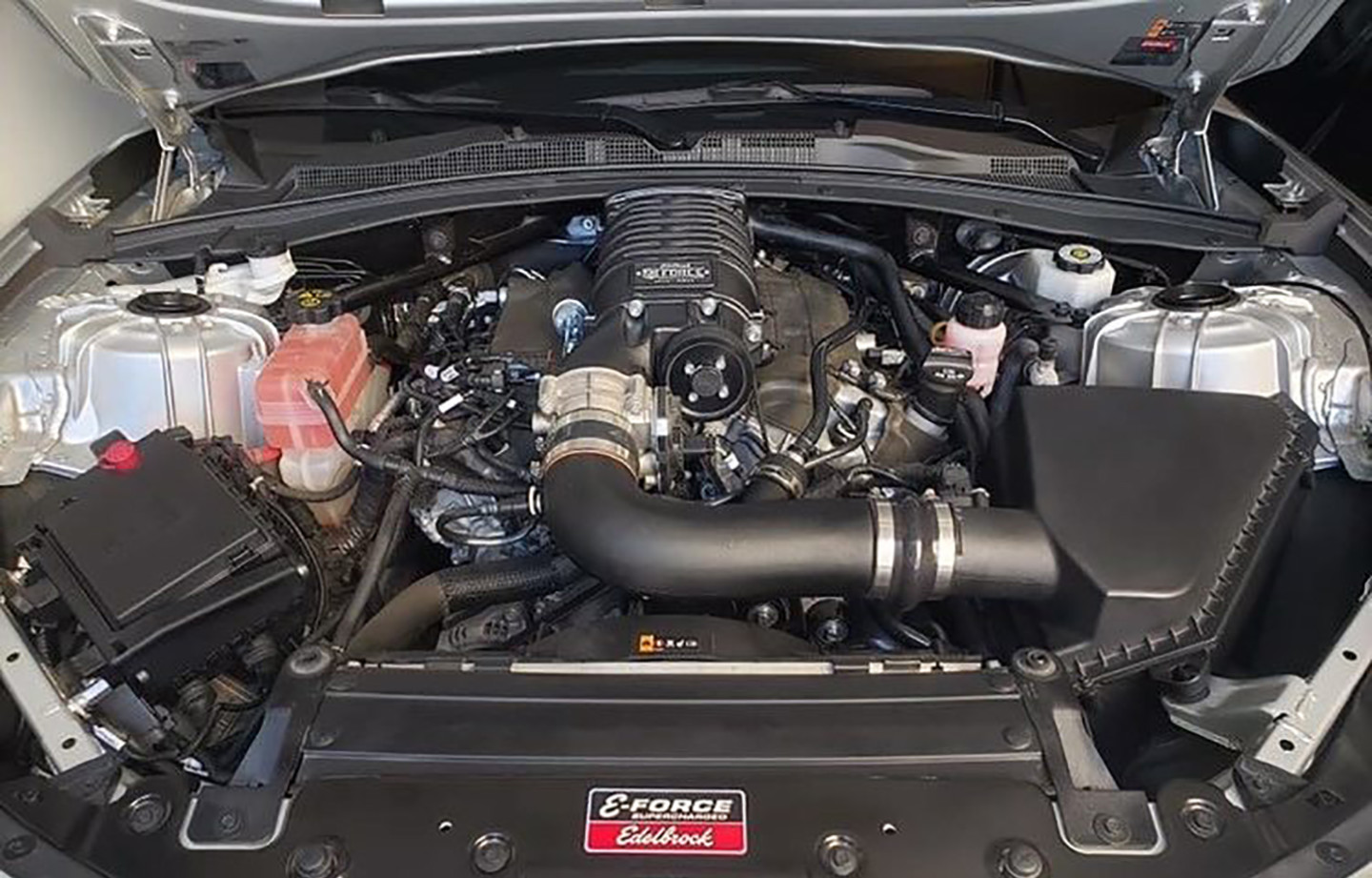Adding forced induction to any vehicle is an excellent bang for your buck if you are looking to add more power to your ride. Forced induction, or boost as some call it, comes in many varieties. Each of which is designed to ram more air into the engine than it could ingest from its four-stroke cycle alone. Getting fuel in the engine is the easy part. Getting more air in the engine is where the problem lies. More air in the engine equals more cylinder pressure. More cylinder pressure equals more horsepower and torque.
So what’s used to make boost on modern engines? Typically there are three different types of forced induction systems, and we see all of them here at West Bend Dyno Tuning. There’s a turbocharger, roots, twin-screw, or positive displacement supercharger, and lastly, a centrifugal supercharger. So which one is the best for you? Well, a lot depends on the base engine and the purpose vehicle. Are you pulling a big, heavy trailer with your pickup truck, are you on an autocross track with a light-weight sports car, or do you want a little more power in your daily?
Whirly Boys
Let’s talk turbos. It seems that lately, turbos are the most popular power adder. From OE’s to backyard wrenches, turbos have found their way into almost every platform. Turbos use the engine’s exhaust gasses and heat to spin a turbine wheel connected to another turbine wheel to compress air into the engine. Turbo’s have no parasitic drag, so the power they produce isn’t a drain on the engine, such as superchargers, but they do have many obstacles to overcome for reliable power.
Heat, oiling system, and placement are all challenges for owner’s who wish to use a turbo system. Turbos create heat which results in heat soak. Keeping that heat away from critical components in your engine bay is a big hurdle to overcome. They also usually require their own oil feed and return lines, so plumbing is needed. Turbochargers work best on street-driven vehicles when used in conjunction with an intercooler. These intercoolers can be air-to-water or air-to-air, and their job is to cool the newly compressed air down to a more manageable temperature. The cooler the air, the more density it has. The denser the air, the more oxygen is available in a given amount, resulting in more efficient power.
Roots, Twin-Screw, and Positive Displacement
Next, let’s talk about roots, twin-screw, and positive displacement superchargers. These belt-driven air pumps sit on top of the engine in place of the intake manifold. They compress the air and ram it down into the cylinder. The faster the engine RPM, the quicker this blower spins, allowing for more air to be forced into the engine.
These superchargers usually make an immediate boost level to help make massive torque at low engine RPM, but boost pressure can rise with RPM. These units can have water/coolant running through heat exchangers/intercoolers to help reduce the incoming air charge, which helps tremendously. The cooler and more dense air charge makes for more power and safety. As stated, they use a belt-driven from the engine’s crankshaft to turn a pulley. This act of turning the supercharger alone can take as much as 200 horsepower or more to turn.
Centrifugal Supercharger
Lastly, a centrifugal supercharger is basically a belt-driven turbocharger. A belt connected to the crankshaft turns this supercharger that is usually located on the front drive accessory area. The faster the engine RPM, the quicker this blower spins which improves the amount of air compressed in a given time. On this type of supercharger, boost pressure rises with engine speed. Air-to-air or air-to-water intercoolers can be used to cool the air charge. A centrifugal blower also has a parasitic loss but usually, less than the intake mounted superchargers.
Now that you have picked your weapon of choice, what else do we need to think about? Well, in short, a lot. Stock engine mechanical limitations, fuel pumps, injector sizing, fuel used, spark plugs, and all the components downstream may need improvement. In all cases, building a forged engine is best practice whenever adding more power and specifically higher cylinder pressure, in this case, boost. But, some engines can handle 5-10 PSI of boost very easily, and some much more.
Fuel System
Fuel systems and fuel type are the MOST overlooked and hardly ever budgeted for when someone wants to boost their vehicle. Do you need a larger fuel pump or pumps, bigger fuel injectors, or higher flowing fuel lines? In most cases, the answer is yes to at least one or more of those questions. Another problem is fuel. When adding boost, most combinations will need to run 91 or 93 octane, while some may require race gas. E85 or flex-fuel is an excellent choice for making big power for little money at the pump. The chemical intercooling properties and high octane rating are the main benefits of using this fuel. It’s not uncommon to gain as much as 40-80 horsepower at the wheels when switching to E85 from premium pump gas on a forced induction car, making six to ten pounds of boost pressure. This will vary based on the boost levels and how knock-limited the engine is on 91 or 93 octane. Another option is to run water-methanol or alcohol injection. This injection cools the air charge and adds octane as well.
Spark Plugs
Different spark plugs and spark plug air gaps are typically required changes. Depending on boost level, one or two heat ranges COLDER spark plugs are required. The spark plug gap usually needs to be also reduced due to the increased cylinder pressure. Some direct-injected late-model vehicles may not necessarily follow these spark plug rules, but at minimum, it is always good practice to replace spark plugs when adding boost.
What To Expect
A good rule of thumb is you will double your engine’s power at 14.7 PSI of boost pressure. Why is that? Well, there is 14.7 PSI of absolute pressure all around us. Your engine is an air pump. If we add boost, we are increasing that normal air pressure in the intake manifold. If your engine makes 300 horsepower, it will produce roughly 600 horsepower with 14.7 PSI boost pressure, minus the parasitics from turning the supercharger if the correct fuel is used. This is one reason why turbochargers make more power per pound of boost than belt-driven blowers due to “free” horsepower.
More Power, More Problems
Factory components are not designed to withstand massive amounts of power. So, be ready to upgrade the clutch, transmission, driveshaft, axle shafts, and rear end to handle the newfound power. Many common platforms have known limitations and weaknesses, but a good shop can help you upgrade parts if needed.
We have barely scratched the surface on this topic, but hopefully, this article will give you some direction and expectation of what is involved in adding boost to your vehicle.




